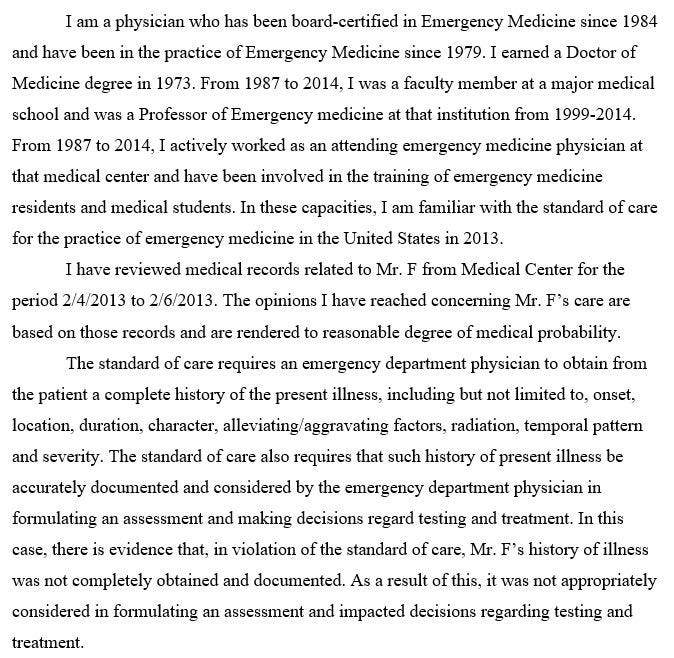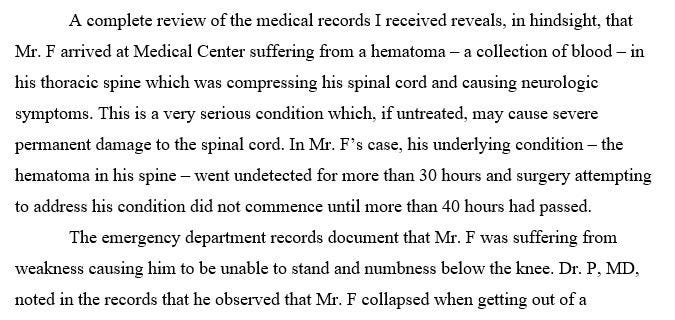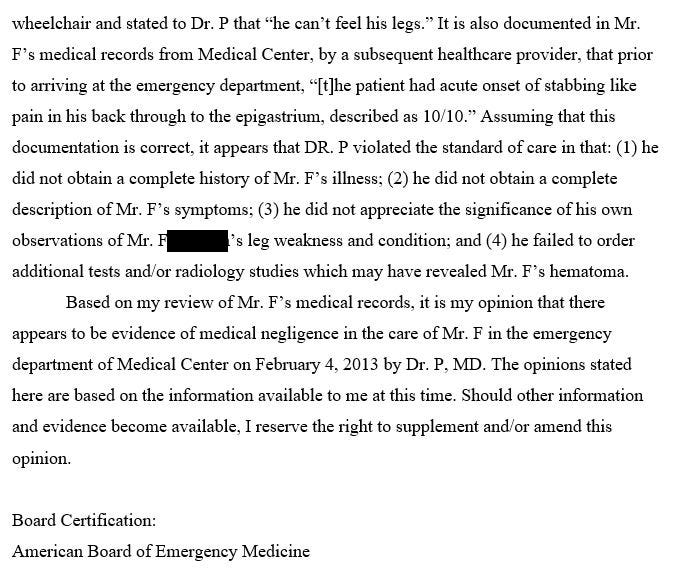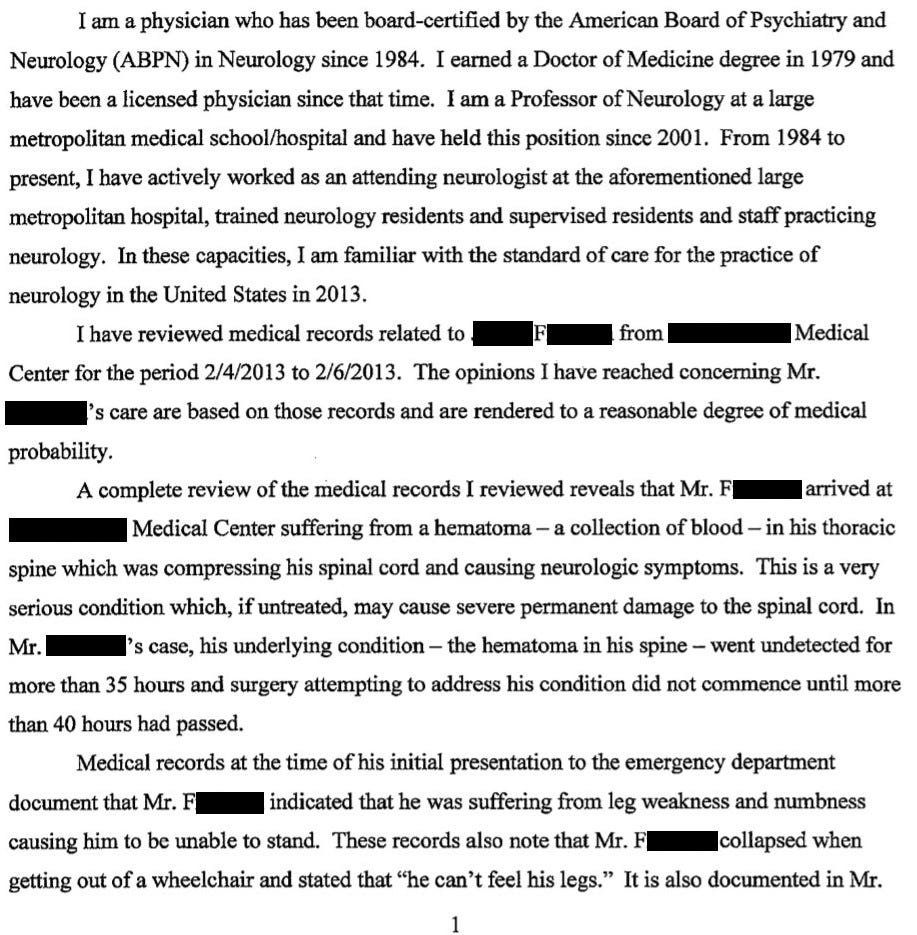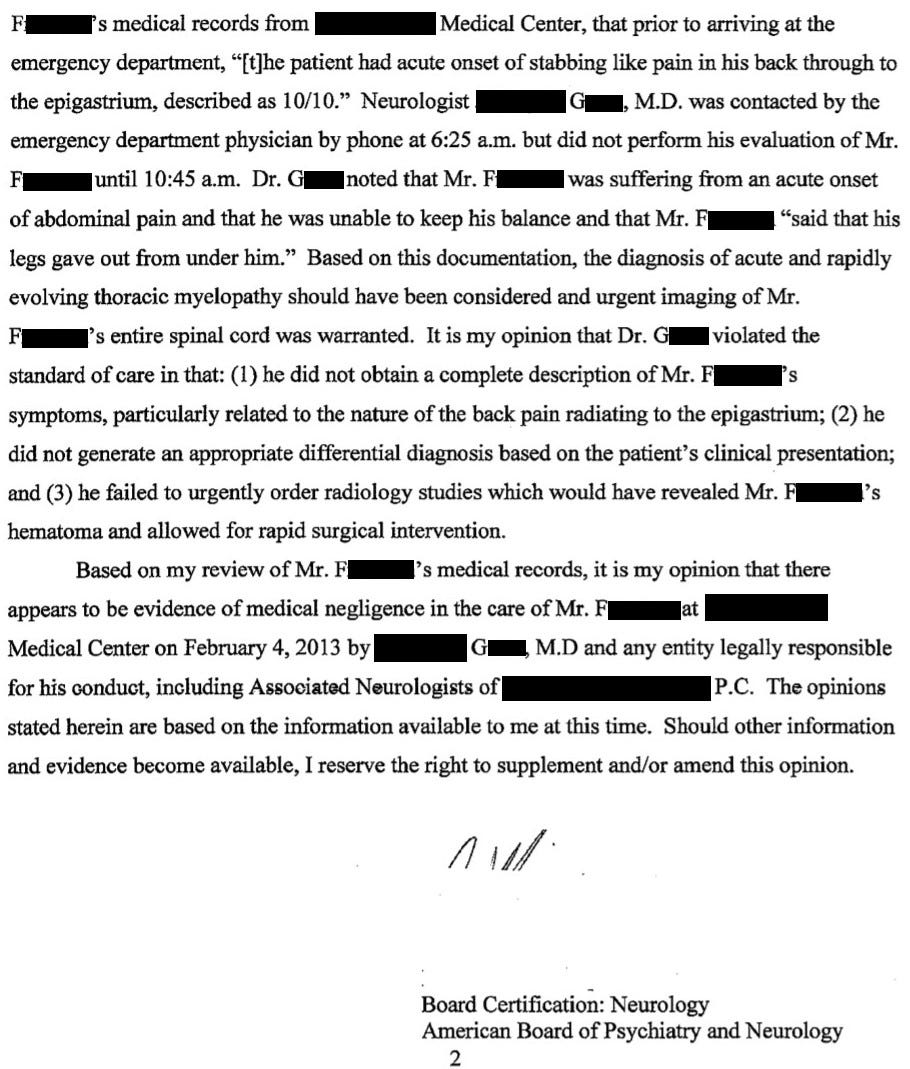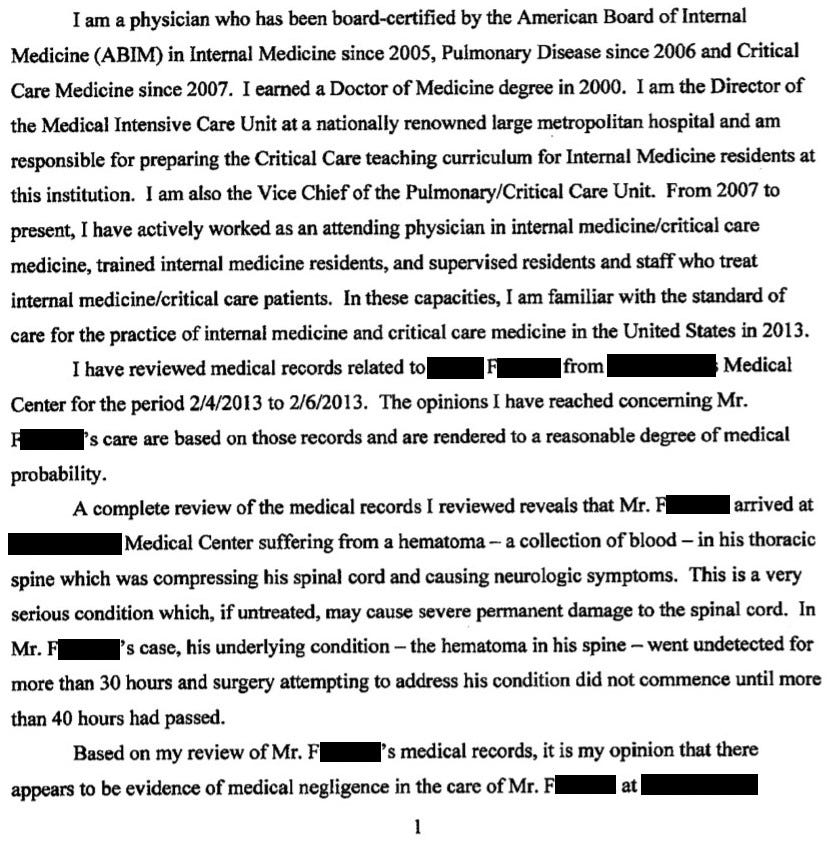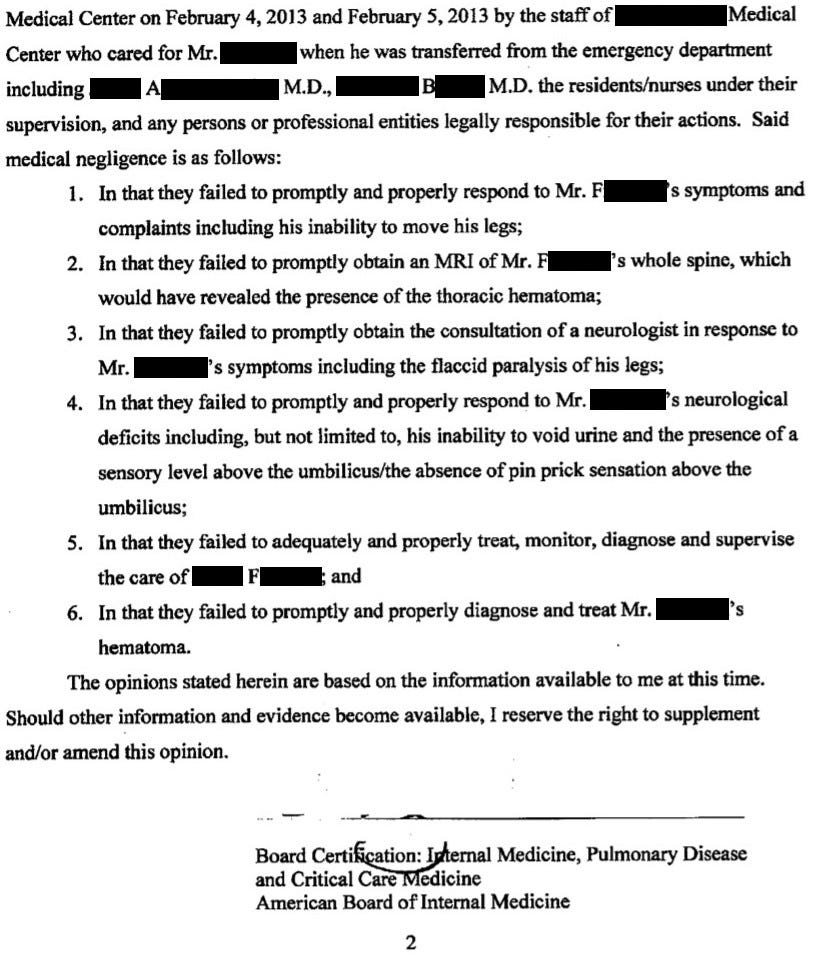Expert Witness Case #7
Mr. F was a middle-aged man (no age given in court documents) who presented to an Emergency Department for abdominal pain, back pain, leg weakness, difficulty standing, and numbness in his legs. The ED physician, Dr. P, witnessed him collapse to the ground as he tried to get from the triage wheelchair to the ED bed. After a cursory workup, Dr. P discharged the patient. The patient, however, refused to leave the ED.
For unclear reasons, the patient sat in the ED until 6:22am, at which time the ED physician consulted a neurologist, Dr. G. The ED physician was advised to order a lumbar spine MRI and head CT. Results did not show any acute abnormality.
Dr. G saw the patient in the ED at 10:45am and did not recommend any further imaging. He was admitted to the hospital and seen by a resident, nurse, and attending physician. Their documentation was discordant, noting varying levels of leg strength, from complete flaccidity to normal strength. He continued to languish for the next 24 hours. Overnight, nurses documented “flaccid paraplegia” and urinary retention of 629mL.
The next morning, he was again examined by the neurologist, Dr. G, who then ordered MRI of his thoracic spine. The thoracic spine MRI revealed a spinal epidural hematoma.
Neurosurgery was consulted and emergently decompressed the hematoma, but the patient was left with permanent paraplegia.
A lawsuit was filed. The plaintiffs hired 3 physician expert witnesses.
The EM expert witness wrote the following opinion. He notes the failures in the EM doctor’s history, exam and documentation. This illustrates a key point that has been repeatedly made in Med Mal Reviewer cases: documentation is critical to defense. Using the Med Mal Reviewer documentation template can help avoid this issue. Note that the copy of the expert witness opinion was barely legible, so I have transcribed it here for easy reading.
Another key point raised by this case is the importance of choosing the right anatomical segment of the spine to image. This is a repeated issue, resulting in patients suffering permanent disability and being awarded massive settlements or damages. Nearly every time, the physician orders lumbar imaging and in fact the lesion is in the thoracic spine. For another example, see Med Mal Reviewer Case #2.
The easy way to avoid this is to image the entire spine (cervical, thoracic and lumbar). A physical examination will help localize the lesion as well. While other parts of the neurologic exam can help, the dermatome exam is the easiest to test and correlate with an anatomical level.
The second expert witness opinion was from a neurologist.
A third opinion was obtained from a physician with certification in Internal Medicine and Critical Care.
Note that these expert witness opinions have similar structure. They all begin with an anonymized statement of their credentials, and have similar allegations throughout. It is clear that the plaintiff’s attorney has given them guidance in writing these opinions. While the plaintiff’s attorney should not be dictating their medical opinion, they are responsible for helping the expert witness format their opinion to meet the legal requirements in their state.
The lawsuit was filed in May 2015. The lawsuit was withdrawn in December 2018. It did not go to a jury trial. A confidential settlement was reached with all parties involved.
With an annual subscription, you will have reviewed 50+ malpractice cases and 70+ physician expert witness opinions that have been written about them.
That’s more than most expert witnesses themselves have ever read or reviewed.
This unique experience will give you the knowledge needed to improve your own practice and position you as an expert in reviewing cases.
Subscribe to become an expert.




